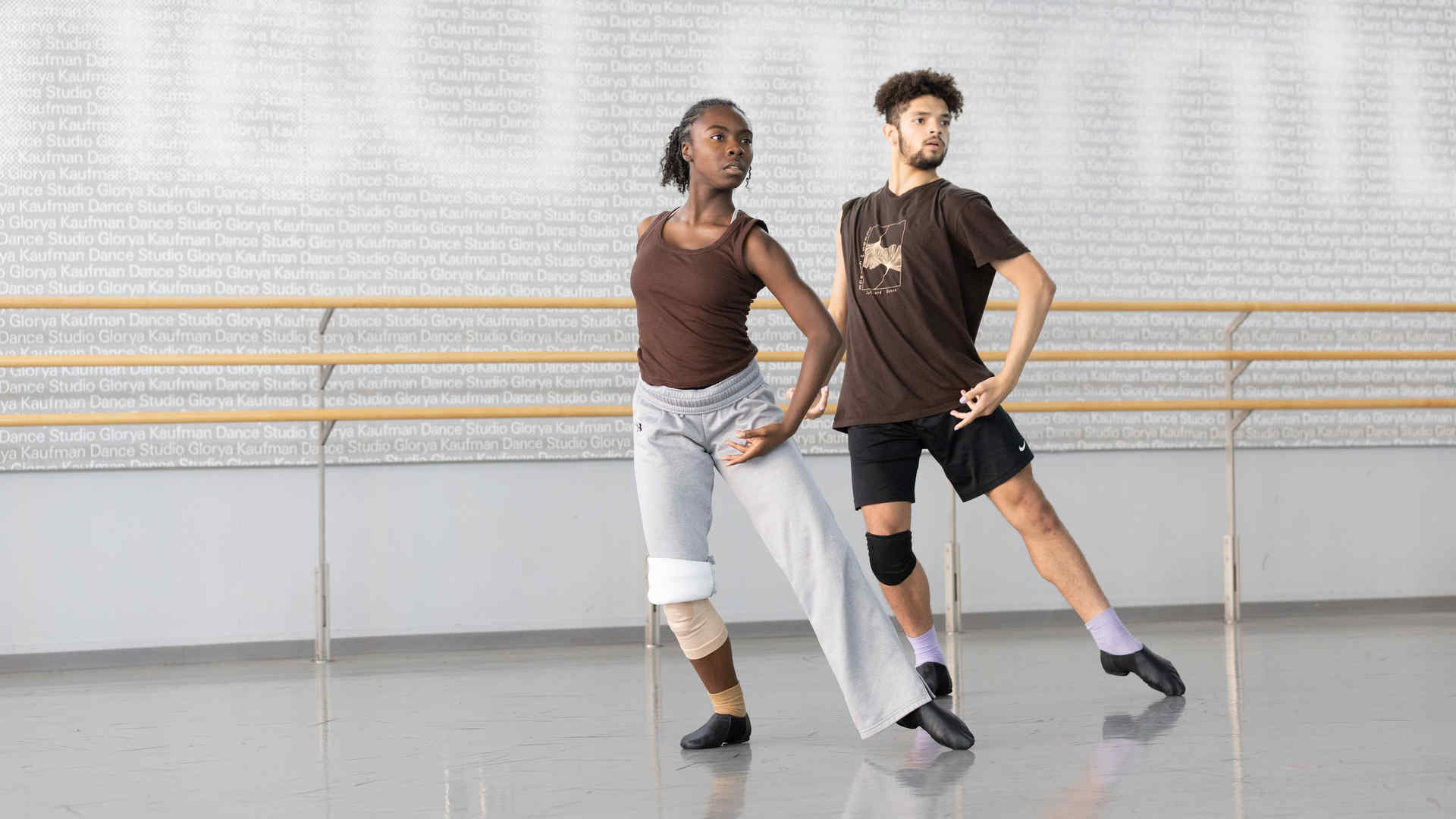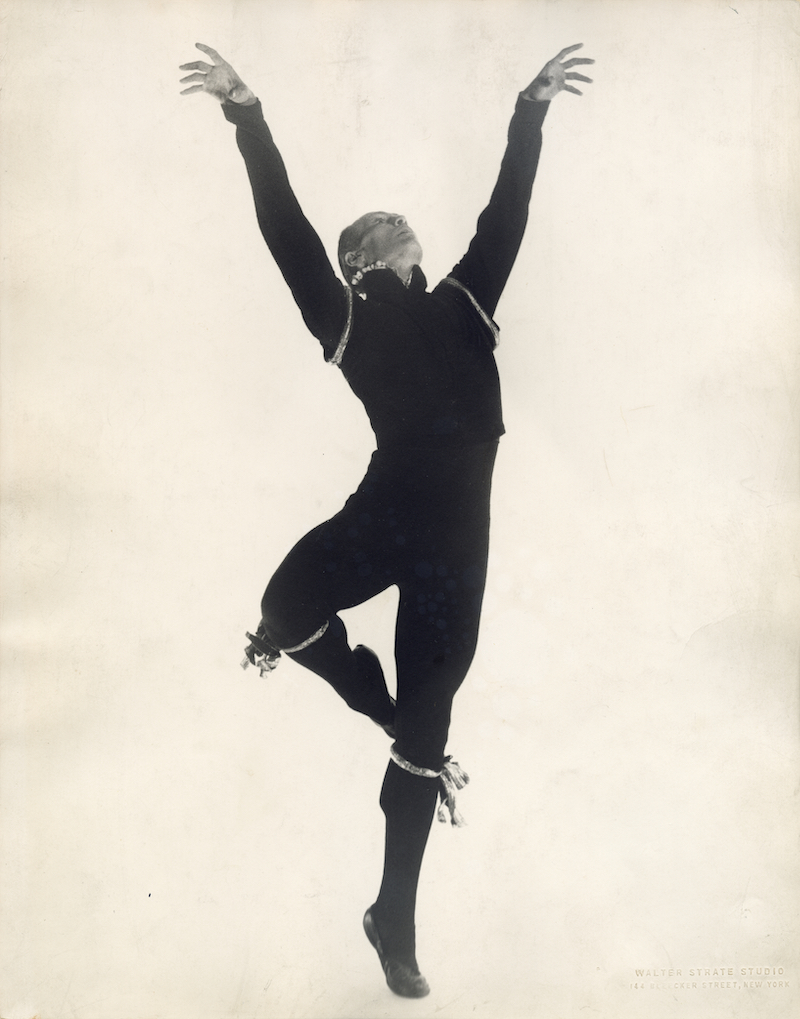
Exploring Limón’s Work
José Limón was a Juilliard Dance Division faculty member from the division’s founding in 1951 until he died, in 1972. His legacy continues daily through dancers taking classes in his method in our studios, as they’ve done for 72 years. This performance season, Juilliard has invited further exploration of Limón’s work through reimagining his solo Chaconne for the 22 first-year dancers. Logan Frances Kruger (BFA ’07, dance), who’s associate artistic director of the Limón Company, has been back at Juilliard this spring staging the work with the support of fellow Limón company alumna Risa Steinberg (BFA ’71; faculty 2000–present). Alexandra Tweedley spoke with them both about their experience with Limón’s work at Juilliard and beyond as well as their thoughts on this reimagining of Chaconne, which will be performed May 12 and 13.
By Alexandra Tweedley
How did you first encounter Limón work at Juilliard?
Risa: When I was a student, we studied the techniques of José Limón and Martha Graham (faculty 1951–77) for our modern dance training. We did a work of José’s every year—a reconstruction one year and then he would create a new work the following year.
Logan: I did study the technique before Juilliard, but my first experience here was in my first-year class with Laura Glenn (faculty 1987–2018). At that time, the Dance Division produced Missa Brevis every year, which she restaged. Working on Missa Brevis gave me a strong sense of community that is so palpable in Limón works, and that experience solidified our connection as a class. As my time at Juilliard progressed, I studied with Risa and performed the solo in Missa Brevis in my third year. Kevin Shannon (BFA ’07, dance) and I also performed the “fast duets” from A Choreographic Offering for our Senior Graduation Concert.
Risa: Missa Brevis is so much about the ensemble—it has a magical ability to inspire concern for others, and that’s one reason it was so special for the students to do it here for those many years.

How did your experience with Limón’s work evolve after Juilliard?
Risa: José invited me into the company soon after I graduated. My immersion into understanding the work was in his company and afterward, when I started dancing with Annabelle Gamson and studying the works of Isadora Duncan, who José considered his “dance mother.” I stayed with the Limón company for 11 years and continue to teach Limón and reconstruct his works.
Logan: I joined the Limón company two years after graduating and danced in it for nine years. Teaching and reconstructing gave me new layers of understanding into
the work. Then programming became part of my role and [discovering] how those works relate to works created now gave me further understanding. I keep peeling back the onion and learning more as the relationship deepens.
Risa: Reconstructing Limón’s works always offers more layers of understanding. I remember the first time I was reconstructing A Choreographic Offering. I realized so much more about how brilliant a craftsperson he was. I had a new understanding of his clarity of architecture, which was remarkable—I am in awe of his artistry.
Risa, how has it been teaching Limón at Juilliard and passing on that legacy?
Risa: It’s been many things. Dance is always reinventing itself. After some years of teaching here, I enjoyed thinking and questioning myself about what the Limón language had to do with the new generation of dancers. I realized there are so many elements of Limón that are essential and practical for all dancers. For example, the ability to release and then use that information to go down into the floor and find clarity and specificity in the journey informs the contemporary floor work dancers are being asked to do today. Understanding how breath and movement are married—I believe these elements are foundational. The Limón style and the identifiers are fun to learn, but if I didn’t think other parts were useful beyond doing his choreography, I’m not sure I would still be teaching this work.
Tell me about Chaconne in its original form.
Logan: José Limón made the solo for himself in 1942, before he founded his company. He was invited by his mentor Doris Humphrey (faculty 1951–58) to make this piece on a shared bill where the music was all Bach. It was the first time he presented work with his mentor on an even playing field. He choreographed to Bach’s Partita in D Minor in his living room listening to the music over and over and asking what it wanted of him. The result was a formal, intensely musical solo. It’s not narrative, but you can see the journey of a person making their own path and deserving to take up space in the world.
Risa: To me, Chaconne is an exposé of who José was. Everything about this work has stature, formality, and grace. He was regal and his presence was demanding. What’s interesting about Chaconne—and what I am interested in now that we’re working with the students—is finding and sharing its power and vulnerability, its generosity and acceptance of who we are. José had enormous humanity and the piece shows that.
Logan, how is being back at Juilliard and reimaging this work?
Logan: It’s exciting—I haven’t been here since I graduated, so that feels great. And it’s exciting to think about Limón’s connection with the school. Of course, that connection is carried on by Risa, among others, but my being a continuation of that legacy feels full circle. It’s also an exciting challenge to make a solo into a dance for 22 people. I’m excited for the dancers and I to tackle that and find our way to what that will be.
What do you hope this opportunity will mean for the first-year dancers?
Logan: I hope they enjoy the process of learning this material. It’s technically challenging and really musical, so there is much meat to dig into, and I hope they enjoy that. I also hope to help facilitate for them that feeling I felt in Missa. And while it doesn’t lend itself too explicitly to community, I want to help them find this with each other and to put what they’ve learned with Risa into this process and to know they’re also part of that legacy.
Risa: The music will be played live, an amazing gift and learning experience for the dancers. Because the entire first-year class will be dancing this work together, I don’t doubt it will bring a unity of spirit. It was already so clearly present in the first week of rehearsals. They are an amazing and gifted collective!